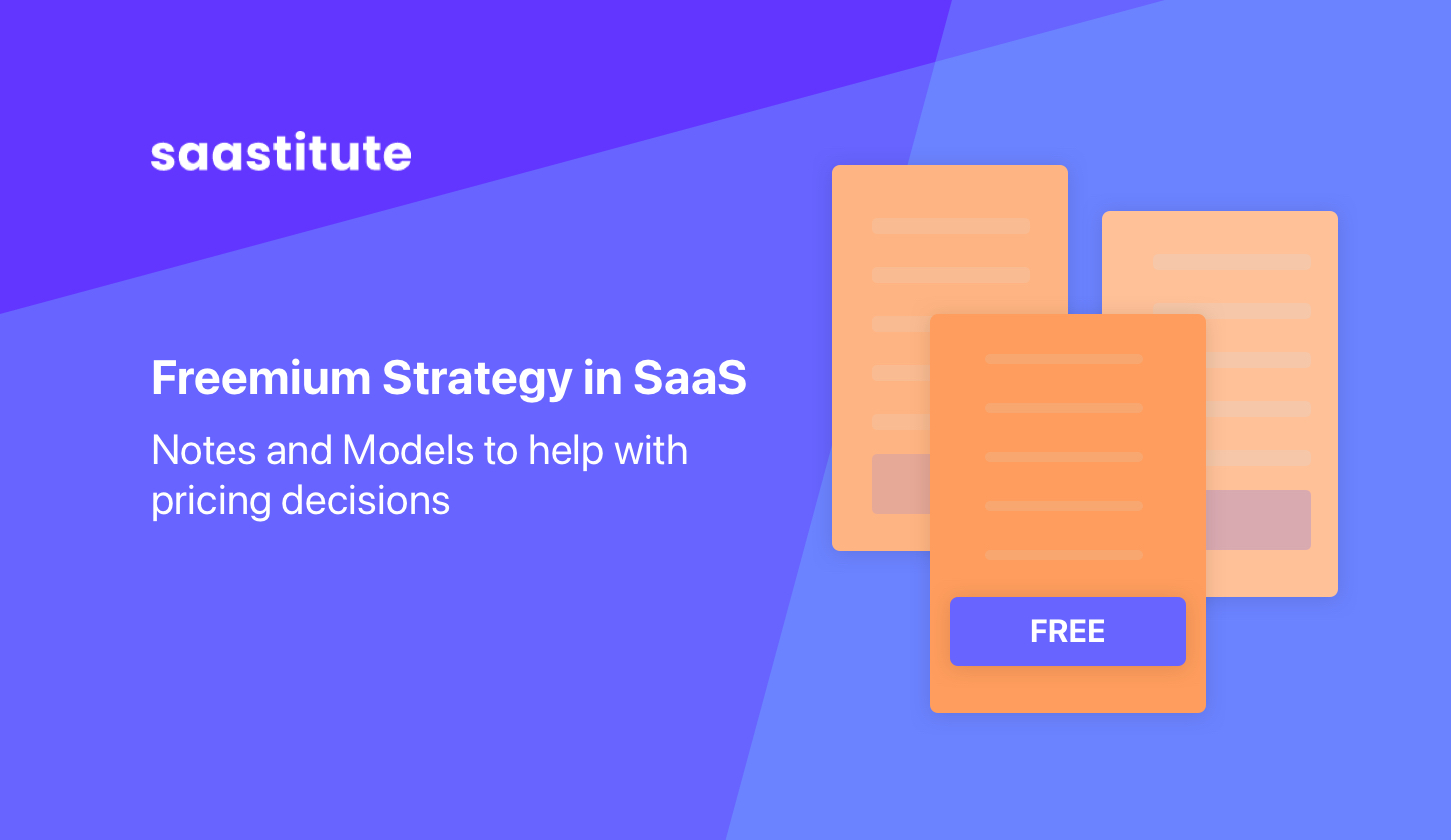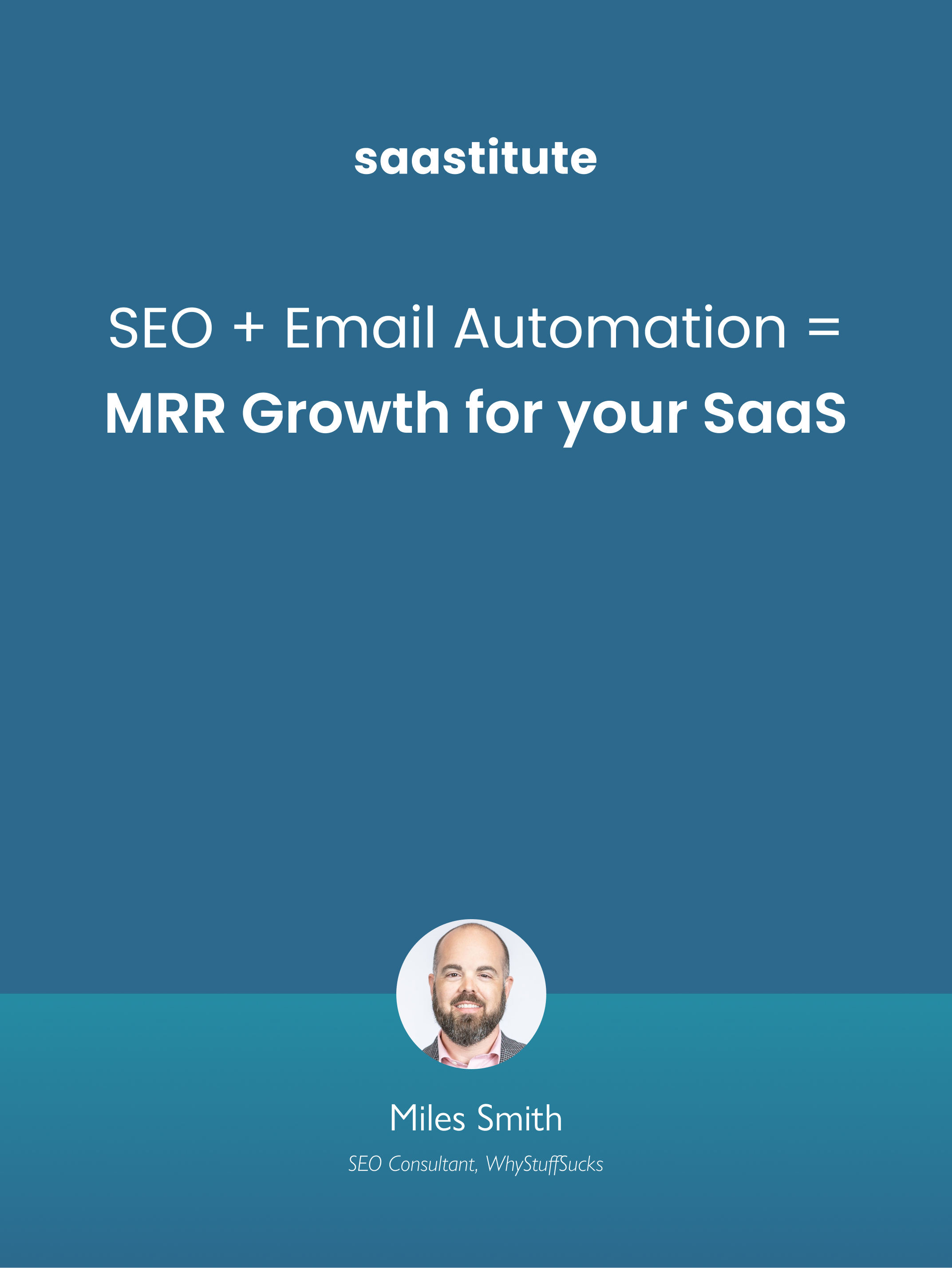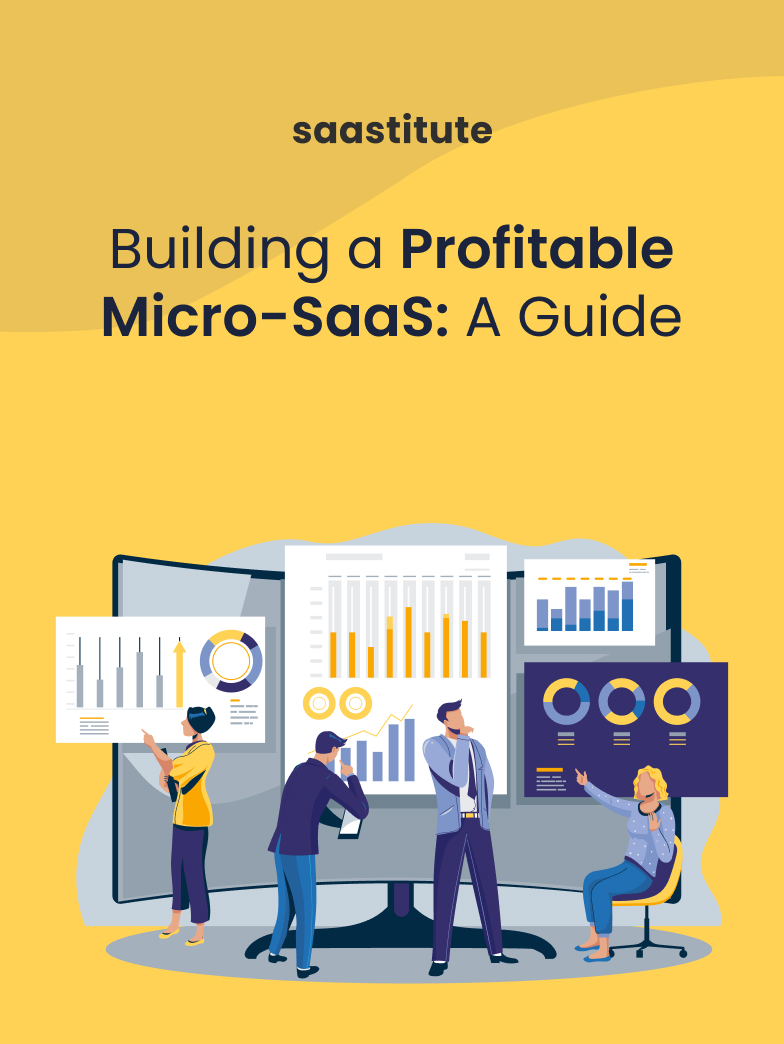Freemium Strategy in SaaS - Notes and Models for making pricing decisions
Thinking about a free plan is a part of almost every SaaS journey. Free plans can make or break your acquisition strategy, and this article shares mental models, practices, and ideas to ensure you don't go wrong when thinking about a Freemium strategy.

Somewhere around 2009, the SaaS world started talking about freemium pricing strategy. Put simply, a freemium SaaS offering implies free access to your product in a limited way.
The most successful SaaS products like Hubspot, Slack, Invision, Zapier, and many more leverage this, and so it’s not surprising that every SaaS leader has considered it at some point for their own product as well.

I have been in a place where I was thinking about the same. But today when I look back at the exercise I did a few years ago, I feel there was so much wrong with the way I thought about freemium.
This article is a compilation of notes on how to think about leveraging the freemium pricing strategy.
What is freemium pricing?
The word freemium comes from a mix of the words “free” and “premium” - which make freemium a pricing strategy that lets b2b SaaS businesses offer both - free plans to their services and paid ones. Usually, the free plans include the basic features of the service which can then be upgraded to premium features with the paid plan. In addition to extra features, the premium plan can also offer a better experience (lack of ads or no usage limit). Some popular freemium plans include-
- Pandora’s free services that can be upgraded to remove ads
- Trello that helps you stay organized with unlimited tabs and boards for free, but starts charging you if you need to integrate your account across different platforms.
- Dropbox that offers free 2Gb cloud-based storage, and if users need more space, they can pay for it.
- Zapier that allows up to 5 free zaps per month, that can run up to 100 tasks. For access to more zaps, users have to move to the paid version.
A common mistake that businesses make with freemium is that they tend to treat freemium as a plan, when in fact -
There is nothing called a freemium plan.
Yes, you read it right. When you leverage a freemium strategy, you end up with a free plan. Freemium is a strategy, not a plan, and what forms the crux of the freemium strategy is a free plan. While this might sound like a childish pick on verbiage, it’s important to remind yourself about it for some critical reasons-
- Freemium strategy is about acquisition, not revenue - The primary motive of a freemium pricing strategy is to acquire more customers. It’s an acquisition strategy, and that’s how you should think about it. Switching the question from “Should we experiment with a freemium plan” to “Should we experiment with a free plan” changes how everyone in the room thinks about it. The idea I am trying to pitch here is to keep the thought of revenue a little further away, and bring attention to the word ‘Free’, and how it has been historically correlated with better conversions.
- Free Trial vs Freemium is a stupid argument - The adjective is a personal opinion, but yes, the argument is not very sensible. And this argument stems from the fundamentally misplaced thought of a freemium plan. In some of the most exemplary implementations like at Hubspot, Buffer, and Notion, a freemium strategy coexists with a free trial on paid plans. This is a very small pick, but believe me, this will help you bring clarity to your decisions around pricing.
Is a freemium strategy right for your b2b SaaS business?
The concept of a “Brand” has been called the ‘sum of all experiences,’ so a free trial can be quite tempting in the sense that it gives you a lot of room to create more experiences, and hence build a better brand. However, not every SaaS business should consider a free plan, and there are some obvious reasons for that. We recently had a 2-hour long conversation with one of our clients on this, and we boiled it down to a few interesting points. These points can help you objectively decide on whether you should move towards a free plan or not.
Should your b2b SaaS business opt for a free plan?
Make sure your product is fit for a free plan-
You should consider a free plan if-
1. Your product has high CAC.
High CAC owing to poor website/pricing page conversions is an ideal environment to start thinking about a free plan - Free plans are proven to help with more signups. This ties back to the real intention of freemium - acquisition.
2. Your product value takes time.
Delayed gratification from the value of your product is also a good place to experiment with the freemium strategy. Think about wiki SaaS tools like Notion, Coda, Slab, or Slite - These tools provide a platform for teams to build knowledge, which will ideally take a while. Only after a fair amount of usage will tools like this become valuable to users, because a good part of the value is generated from usage (we will talk more about this further in the article)
3. Your b2b SaaS business builds a unique value proposition.
If you can build a unique value proposition through a free plan, you should certainly consider it. Consider the example of the popular vector/UI design tools - Sketch and Figma. Sketch offers a 30-day trial, but Figma lets you run free with some limitations on your account. At Recurr, a few months back, we had to choose between Asana and Basecamp for project management, and Asana’s free plan made it an obvious choice for us. If your product is in a space where no other software has a free plan, you can reap a lot (in terms of acquisition) from a freemium strategy.
A free plan is probably not the best idea if-
1. Your b2b SaaS business has high operational costs.
High operational costs per account should steer you away from free plans. While most software businesses have this cost very much under control, sometimes that’s not the case. This could be true if you’re in the business of high bandwidth or high server costs (videos) or are using expensive APIs (SEO software consuming Semrush’s APIs).
2. Your b2b SaaS business has a high onboarding cost
High implementation costs or significant onboarding friction should also steer you away from free plans. Tools like Gainsight and CustomerSuccessBox need deep integrations with an existing stack and an unguided onboarding can leave customers with an ‘it didn’t work for us’ notion. Further, legacy software or a very early stage product that was not built from a product-led, self-serve approach might consume too much from the success/implementation team. Avoid free plans till you have solved this.
3. You’re solving for short-term revenue goals.
When you’re solving for revenue in the short term, you should most certainly stay away from thinking about free plans. While an increase in signups is often a result of free plans, generating revenue from it is a long-term game. Only 3-5% of free plans upgrade to paid accounts in the most successful cases, and the number of accounts needs a while to make that conversion rate translate to a sizeable revenue. In fact, the time it takes for free plans to start showing an impact on revenue is also much higher than what you’d think.
If your b2b SaaS business can work on retention, revenue will follow.
If you’re convinced that your product can afford and benefit from a free plan, the next step would be to optimize your product for maximum returns. The end goal is of course revenue, so eventually, you want to think about how to upgrade your users to a paid plan. But, it’s essential to keep in mind that conversion to paid plans is a long-term game. And the only way you’re going to win this game is if you can retain them for long enough.
Retention on a free plan, the way I look at it, is a function of usage and switching costs. If your users use your product for long enough, and if switching to an alternative product is hard enough for them, they’re more likely to become paid customers. An increase in usage should naturally lead to an increase in dependency on your product. This is useful for retention. If the dependency is not enough, the increased usage does correlate with an increase in switching costs - You’re still at a high risk of losing users to your competitors.

Designing your product for a successful freemium strategy-
From personal experiences and from second-hand knowledge, I could list down some actionable ways I have come across to think about optimizing your product for retention (and consequently revenue).
Create non-transferrable UGV (Usage Generated Value).
Yes, that’s an acronym I just made up, but there wasn’t an existing term for what I wanted to convey. What it refers to is the value that your product provides upon use, that can’t be transferred to your competitor.
For example, think about the report of a newsletter campaign that Hubspot provides. You can transfer the email list and the template to another tool, but you can’t move the reports. If there is a significant chunk of historical reporting, the user is less likely to be comfortable switching to another tool. For Slack, it’s the conversations. For Notion, it’s the inter-linked tables and pages.
Increasing usage might be a great way to show value, but it’s not enough to retain your users. Some features that you could use to increase non-transferrable UGV include-
- Notes - If you’re a pro Google Analytics user, you must have used time-tagged notes to mark important changes you made to your website which might cause changes in analytics. Can you build something similar in your product?
- Tags - I aggressively use labels inside Superhuman, and campaign tagging inside Hubspot. It’s not possible for me to move to alternatives now without significant discomfort.
Increase workflow contribution
A few months ago, we were evaluating some new tools like Rock and Twist to replace Slack. This was around the same time when Slack Connect was launched. Suddenly, Slack was replacing more of our emails and workflows (collaborating with our contractors and clients at Recurr).
The lesson here is to build features into your product that don’t seem to be solving the exact problem you set out to solve. These features create dependency by bringing an adjacent tool, workflow, or user into the picture.
This is a slightly difficult idea to communicate, but some examples should help-
- Create new user roles - During my time at Fyle, we came across a feature that made Expensify a better choice than our solution. The feature was a unique user role called “Co-Pilot” and was used by founders and leaders to delegate limited access to their assistants for compiling expense reports and approving expenses without sharing passwords.
- Build Integrations - Quite a few of our clients have been hesitant about moving out of Hubspot and made the GIANT leap from free to premium plan because of the Gmail integration.
- Add more devices and users - Notion adds free credits to your account if you log in using your mobile app and when you invite more users. It’s actually embedding itself on more of my workflows to build greater inertia.
Finally, generating returns other than revenue-
When you provide something for free, people feel obligated to give back. They are more likely to barter some other form of currency for your discount to them.
Once you have managed to increase usage, utilize the psychological leverage (the feeling that the user owes you) to get returns in a form other than the traditional revenue. This is very similar to farming an existing account - You’re trying to get more per account but not in revenue, but in an alternate currency-
- Referrals - Ask your users for referrals. I don’t feel the need to explain this.
- Feedback - Customer interviews could be a win-win for everyone involved. The user gets a sense of contribution and you gain qualitative insights into your users. At scale, you could also keep sending in-app forms over a period of time to build a stronger user profile and better align your product marketing strategy.
- Testimonial - Run those G2 Crowd and Capterra campaigns without spending the discount coupons (keep them to incentivize the paid accounts). If you see a power user, reach out 1:1 and ask them to help you in adding strong social proof to your website.
That’s it. Those were all the points from my scrappy notes over the last few days since the team started working on the Pricing Guide for B2B SaaS. If you have ideas that we could append to this article, please do write to us. And as usual, if you have thoughts, suggestions, or feedback on this article, please feel free to directly reach out to me and talk.
Also read, Should Your B2B SaaS Product Offer Free Trials?














.svg)


